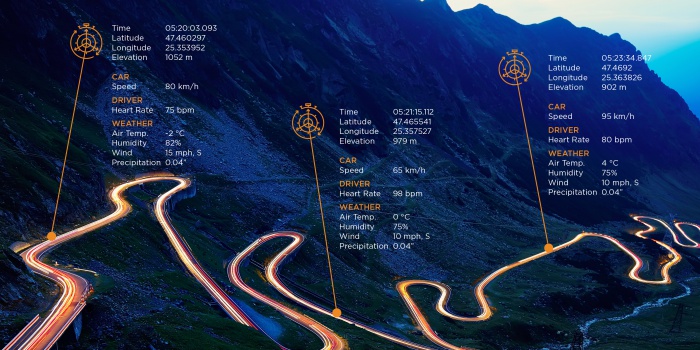By combining time-series, temporal, geospatial, operational and customer analytics, Teradata boosts smart cities, wearables and transportation
Teradata (NYSE:
TDC), the leading cloud-based data and analytics company, today announced the availability of “
4D Analytics,” a new capability in advanced analytics that combines 3-dimensional geospatial location data with the 4th dimension of time. This advanced functionality is especially relevant in edge computing applications that exist to manage constantly changing time and location variables. By integrating these capabilities – primarily geospatial, temporal and time-series data – into the Teradata Analytics Platform and making it easy to combine the capabilities with operational and customer analytics, Teradata is enabling its customers to operationalize enhanced IoT analytics use cases.

(Click on Image for Full Size Version)
“We are on the brink of a massive explosion of IoT applications and use cases powered by advanced analytics,” said Tim Henry, Senior Vice President, Strategic Offering Management at Teradata. “Devices at the edge, like connected cars, fleets, planes, traffic lights, roads, wearables and so much more, will become smarter and more valuable as new analytic insight is pushed out to them. Teradata, with the industry’s first 4D Analytics capability, is primed to lead this revolution of smarter edge computing, driving broad improvements that range from reduced traffic and greater energy efficiency, to increased transportation safety.”
The promise of IoT is clear, and for many industries, it’s a critical investment for the business. The Teradata Analytics Platform increases the return on this investment by making edge computing smarter and enabling business impact analysis, bringing deeper insights to traditional sensor data analysis. The addition of 4D Analytics capability enhances IoT analytics by using insights based on both the time and “space” of a device, such as cars and wearables. Combining time-series (a series of data points collected at set intervals that shows activity and changes over time), temporal (for storing data related to relevant time periods) and geospatial data (that is associated with a device’s location), provides contextual analytics based on when and where.
“In almost every vertical industry today, innovative companies are making investments in digital transformation to change how they operate and create new insights that can cut costs, retain customers and grow revenue,” said Mike Ferguson, Managing Director at Intelligent Business Strategies. “IoT brings new challenges with respect to data and analytics, requiring both edge and centralized scalable processing. To tackle these challenges, Teradata should be considered as a partner given their comprehensive support for IoT analytics.”
The use of Teradata’s 4D Analytics capability exposes deep insights that enable new logic and rules to make the edge smarter. Enterprises interested in staying ahead of competitors can use the 4D Analytics capability to power a variety of enhanced applications, including:
- Analyzing patterns of trains, subways, cabs, automobiles, traffic lights, restaurant traffic and general citizen movement, resulting in new insights back at the edge as new logic and rules to make smart cities, smarter;
- Studying sensor data from a vehicle fleet, such as travel times and routes, to optimize operations and predict the probability of a breakdown and the resulting business impact;
- Using wearables and personal medical devices to analyze data on patient heart rate and activity, to understand medication compliance;
- Analyzing data from individual cars to understand the difference between an accident and a near miss, making all cars smarter and safer; and
- Around transportation-as-a-service, combining time-series and geospatial data with demographic information (i.e. elderly or student riders) and weather data to create highly targeted custom offers that are sent to devices in near real-time.
According to a research paper by Dr. Barry Devlin of 9sight Consulting, published in November 2017, “Time series data is the basis for advanced analytics of the output of the Internet of Things… The ability to fully support both aspects of time — time series data and bitemporal data — in a single environment is a central requirement in the design and implementation of a Production Analytic Platform.”
The Teradata Analytics Platform, with its new 4D Analytics capabilities, is a foundational component of Teradata Everywhere: a flexible, agile and scalable way to ensure a high return on analytic investments, available in the cloud with the freedom to change deployment environments as business needs evolve.
Relevant News Links